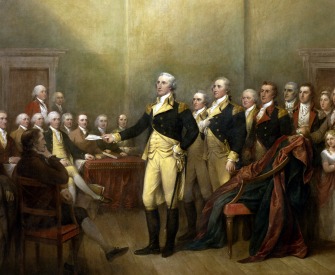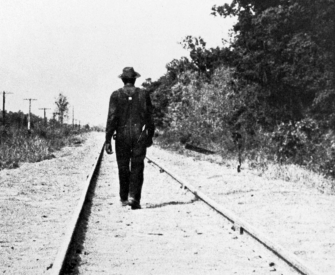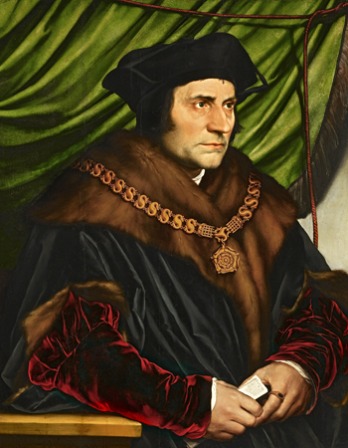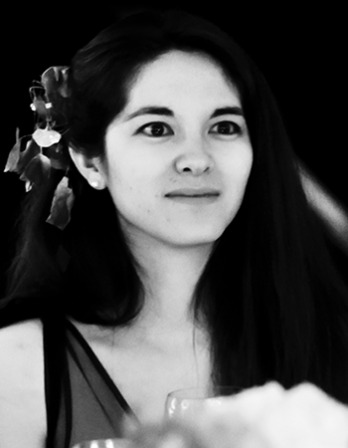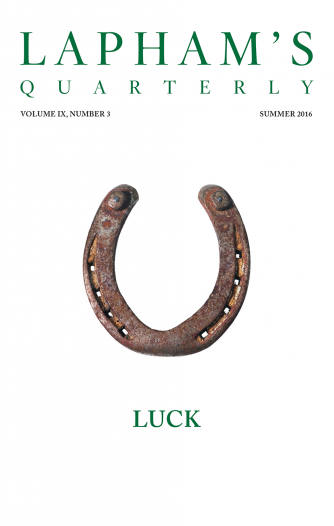Liberty means responsibility. That is why most men dread it.
—George Bernard Shaw, 1903
Solitude, by Richard Wilson, c. 1762. National Gallery of Art, Washington, DC, Paul Mellon Collection.
One March day in 1742, a very unusual man set up a table on a busy Philadelphia street. Benjamin Lay was sixty-one years old, wore humble homespun clothes, and sported a long beard. His head was large and his eyes luminous, but his posture and height immediately set him apart: he had a stooped back and stood a little over four feet tall. He carefully laid out a few teacups and saucers, delicate objects that had been treasured by his wife before she passed away, and then proceeded to smash them with a hammer, crushing the dishes with dramatic flair. With each loud blow, bits of ceramic flying, he denounced the “tyrants” in India and the Caribbean who mistreated the workers who harvested the tea and enslaved the people who produced the sugar that his Pennsylvania neighbors consumed.
Oblivious to his words, passersby responded to his deeds with shock and indignation. Some implored Lay to hand over the porcelain wares for safekeeping, while others offered to purchase the set or dashed to grab the cups to spare them abuse. A group of young men picked Lay up and threw him to the ground before hauling him away to prevent him from committing further violence against property. Unwittingly, they all became players in Lay’s performance, illustrating his moral point. Philadelphians cared more passionately about the safety and sanctity of objects than they did about that of other human beings.
Born in 1682 in Essex, England, to a Quaker family of modest means, Benjamin Lay possessed—or perhaps more accurately, was possessed by—an unshakable moral conviction that compelled him to follow his conscience, even as it led him to live a deeply unconventional, and in many ways uncomfortable, life. In England he was disowned by two Quaker communities for accusing religious leaders of covetousness; Lay saw the community’s rising wealth and materialism as anathema to the Society of Friends’ commitment to equality. In Pennsylvania, where he moved in 1732, his truth-telling and deepening antislavery militancy got him disowned twice more.
Decades before the Bill of Rights was ratified, Lay’s speech was remarkably free. It was also creative. His brazen self-expression was undoubtedly unique, but it was not without precedent. In the decades prior to his birth, Lay’s home county of Essex had been a hotbed of political protest and religious rebellion. During the English Revolution, radical sects including the Diggers, Ranters, Seekers, and Levelers deployed spectacular tactics to challenge established authority and liberate the individual. Quakerism was part of this emancipatory efflorescence, emphasizing God’s presence in each person, including women, through what adherents understood to be an inner light. By elevating the spiritual experience and moral conscience of the individual, Quakerism demoted traditional clergy and undermined social hierarchy. Friends dressed in a simple style and flouted convention—behavior that led to their persecution in England and in the colonies before the Society became more established.
Lay knew this history well, and his protests harked back to this rich tradition of dissent. His guerrilla theater was calibrated to shock and persuade. Above all, he sought to expose the hypocrisy and vanity of the Quaker elders and ministers who owned people—how could a faith that preaches pacifism be reconciled to the theft and torture of human beings believed to be possessed of an inner light?—and to highlight the avarice and violence that ownership entailed. By doing this, he revealed the complicity of the broader community, which he felt had lost touch with its core values: commitments to equality, nonviolence, and the Golden Rule above all. He did so by making a scene at every opportunity. During worship, Lay would vehemently denounce any slaveholders who spoke, sometimes from the women’s section, where he occasionally sat in subversion of ossifying gender norms. One Sunday morning he stood shoeless in the snow outside the meetinghouse. When Friends passed by and expressed worry that he might catch cold, Lay replied that they should extend the same concern to the “poor slaves in your fields, who go all winter half clad.” Another time, Lay aimed to teach a lesson to neighbors who owned a young Black girl by entertaining their son at his home for an entire day, unbeknownst to the parents. When the couple approached Lay in a panic, convinced their child was lost, he called the boy over. Perhaps now, Lay told them, they could imagine the anguish of the girl and her family.
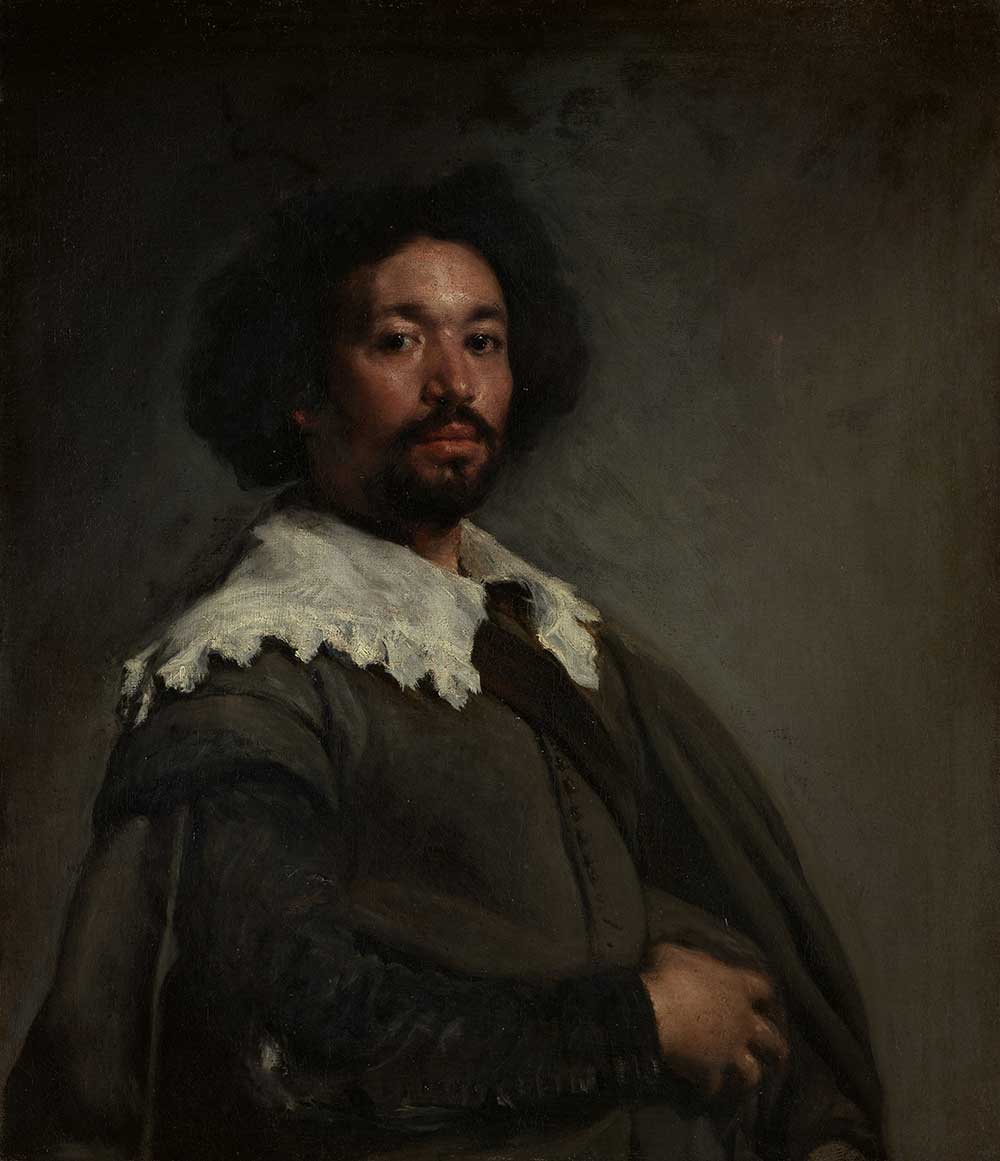
Juan de Pareja, by Diego Velázquez, 1650. The Metropolitan Museum of Art, purchase, Fletcher and Rogers Funds, and bequest of Miss Adelaide Milton de Groot (1876–1967), by exchange, supplemented by gifts from friends of the Museum, 1971.
In England Lay had met and married Sarah Smith, a talented and respected minister who, like her husband, was a little person, and she remained in good standing with the Society of Friends until the end of her life. In 1735, after seventeen years of marriage, Sarah died of unknown causes. Lay threw himself even further into his abolitionist mission, escalating his political activism and embracing ascetism. In Abington, a hamlet eight miles north of Philadelphia, while residing in a rustic cottage he had constructed out of a small cave, he wrote a groundbreaking book and redoubled his attacks on the “man-stealers” and miscreants he despised.
As a youth in England, Lay worked as a shepherd and glove-maker before joining the crew of a ship at age twenty-one, traveling to the Mediterranean and beyond. His twelve-year stint as a sailor helped radicalize him. On perilous journeys, Lay’s fellow seafarers recounted tales of their own enslavement in Turkey and described the terrible cruelty and rape of African people that they had observed—and perhaps participated in—on slave-trading vessels. Years later, Lay and his wife bore firsthand witness to the horrors of bondage during an eighteen-month stint running a small store in Barbados, where there was a small Quaker community that included slaveholders. “The poor Blacks would come to our shop and store, hunger-starv’d, almost ready to perish with hunger and sickness,” Lay recounts. They got to know stolen Africans as individuals and saw what he called “their bright genius.” Lay wrote that their new friends seemed to “rejoice” when they saw Lay and his wife together, “we being pretty much alike in stature and other ways,” and the aid they offered was deeply appreciated, too. Among the enslaved people they befriended was a talented cooper who chose suicide rather than face another unprovoked Monday-morning beating.
Nine out of ten people on Barbados were held as chattel; in Philadelphia, a Quaker hub, the figure was reversed. Yet while slavery was less pervasive in Pennsylvania, there, as in Barbados, Friends tormented the people they held as property, forcing them to perform hard and thankless agricultural and domestic work while themselves professing biblical devotion and dedication to nonviolence. Lay found these individuals contemptible, satanic even, and he told them as much to their faces, over and over and over again.
Lay’s irrepressible truth-telling and theatrical antics could be revelatory for those willing to reflect and learn, but it reliably enraged his elite targets. A true revolutionary, he believed that those at the top of the social, economic, racial, and spiritual hierarchy deserved, in fact, to be at the bottom. No surprise, then, that he was repeatedly punished for his zealotry, including being roughed up by fellow Friends on multiple occasions. Even when he was officially disowned, he fought doggedly to be reinstated and continued to show up at meetings to call out members’ impropriety, uninvited and unwanted as his presence may have been. After being kicked out of one gathering, Lay stretched out on the path just outside the doorway of the meetinghouse, forcing each attendee to step over his prone body as they headed home. Despite his many tribulations, Lay never relented in his all-consuming mission: to turn Quakers against slavery. Through decades of difficult and isolating agitation, he prompted discussion and debate that persisted after his passing, forcing people to take sides on the issue and influencing a younger generation of abolitionists, who carried on his campaign within and beyond the faith (though typically by using less aggressive tactics). In 1758 the Philadelphia Yearly Meeting voted to begin a process that would, in time, censure and eventually disown slaveholders. “I can now die in peace,” Lay exclaimed. He soon fell gravely ill, drawing his final breath the following year at the age of seventy-seven.
During his lifetime and for a few decades after, Lay’s eccentricity, conviction, and brilliance made him locally famous, or at least infamous. Tales of his exploits were passed down as a kind of folklore. Two biographies published after his death introduced people outside Pennsylvania to the extraordinary life of Benjamin Lay. His first biographer was the renowned Philadelphia physician Benjamin Rush, a signer of the Declaration of Independence, who observed that “there was a time when the name of this celebrated Christian philosopher was familiar to every man, woman, and to nearly every child in Pennsylvania.” The second account of Lay’s life was written by the early nineteenth-century lawyer and abolitionist Robert Vaux, who interviewed elderly Quakers who had known Lay when they were young; Vaux described his subject as a “comet, which threatens, in its irregular course, the destruction of the worlds near which it passes”—a comparison intended as a compliment. Despite this initial wave of notoriety, Lay soon fell into obscurity. The 2017 publication of The Fearless Benjamin Lay, a captivating biography by the gifted historian Marcus Rediker, has prompted a much-needed revival and reassessment of Lay’s electrifying legacy. In 2018, thanks in no small part to Rediker’s dedication and advocacy, the four groups that had disowned Lay—the Abington Monthly Meeting, the Philadelphia Yearly Meeting, the North London Area Meeting, and the Southern East Anglia Meeting—issued a joint statement acknowledging his mistreatment and contribution: “We hold that Benjamin Lay was a friend of the truth; we are in unity with the spirit of Benjamin Lay.”
As Rediker points out, Lay’s contribution to the history of abolition was long overlooked for a variety of reasons: his confrontational and uncompromising tactics, the fact that he came from the lower class, and his unremitting radicalism. While Rediker finds no evidence that Lay thought of himself or his wife as inferior in any way, he shows that the couple faced discrimination and judgment for being little people. Lay’s opponents lambasted his mind and his body, denouncing both his figure and his ideas as deformed and deranged; even early historians of abolition, from whom one would expect more sympathy, dismissed him as a “little hunchback” and a “deviant personality.” Lay’s experience of marginalization may have informed his empathy for others who were also unjustly underestimated and abused, whether they were Black people, women, or nonhuman animals. He refused to eat animal flesh or exploit animal labor, a commitment inspired by his reading of the Bible; the Greek philosopher Pythagoras; and his favorite book, Thomas Tryon’s 1683 work The Way to Health, Long Life, and Happiness, which he often carried with him on his travels. His interracial, interspecies solidarity likely stemmed, at least in part, from the fact that he was often assumed by others to be diminished and unequal, even subhuman.
A man far ahead of his time, Lay had few allies and numerous enemies. The expansiveness of his moral vision made it unpalatable to many. His conception of justice transcended race, gender, nation, and species. Finding half measures abhorrent, he insisted that liberation be immediate and absolute. “Lay,” Rediker writes, “demanded freedom now.” His profound conviction that freedom belongs to everyone equally—including the nonhuman animals with whom we share the earth—offered a very different conception of liberty than the one that dominates today, which puts freedom and equality at odds, like counterweights on a scale, making enemies of virtues that are, in truth, twinned. For Lay, freedom and equality were mutually reinforcing, the emancipation of one necessitating the emancipation of all.
Almost three centuries before the concept of intersectionality was introduced, Benjamin Lay’s politics fit the bill. A man from humble origins, he developed a worldview militantly opposed to hierarchy, pretense, and exploitation. His conviction that greed and money were unalloyed evils led him to recognize slavery and racial hierarchy’s profit-driven roots and to commit to a life of voluntary poverty. His refusal to exploit another being’s labor meant he walked long distances others would have traveled by horse or carriage. Later in life, inspired by ancient and medieval hermits and ascetics, he spun his own flax cloth (refusing to use wool) and subsisted on a diet of seasonal produce from his garden and water from a spring not far from his cave. By all accounts his dwelling was spartan but charming, the ceiling covered with evergreen sprigs of pine. It also housed a collection of over two hundred books, including an extensive Quaker library and volumes by some of Lay’s favorite thinkers, including ancient Cynic and Stoic philosophers and, of course, his beloved Tryon, whose writings connected the brutalization of animals with that of humans and advocated for a plant-based diet.
From his cave, Lay set about trying to understand and transform the wider world. Though he lacked formal schooling, he had learned to read and write during his seafaring years, taught by his shipmates. In Pennsylvania he worked as a bookseller. After Sarah died, he began compiling a book of his own. Lay knew that the Overseers of the Press, a committee tasked with authorizing Quaker publications, would censor it—it was written specifically to turn the community against many elders and ministers—and so he asked his friend Benjamin Franklin to print the volume. The remarkable title is worth reproducing in full:
All slave-keepers that keep the innocent in bondage: apostates pretending to lay claim to the pure & holy Christian religion, of what congregation soever, but especially in their ministers, by whose example the filthy leprosy and apostasy is spread far and near: it is a notorious sin which many of the true Friends of Christ and his pure truth, called Quakers, has been for many years and still are concern’d to write and bear testimony against as a practice so gross & hurtful to religion and destructive to government beyond what words can set forth, or can be declared of by men or angels, and yet lived in by ministers and magistrates in America.
Published in 1738, the book was only North America’s fourth significant antislavery text—and certainly the most boundary-pushing yet. No prior treatise had been so universalist, unyielding, and outraged. The Overseers predictably condemned it, their official statement charging that it contained “gross abuses, not only against some of their members in particular, but against the whole society.”
Lay’s treatise ends with a message to a “courteous and friendly reader,” apologizing for errors and for “some passages in my book that are not so well placed as could have been wished,” and adds a humble plea to “remember that it was written by one that was a poor common sailor, and an illiterate man.” As Lay readily admits, All Slave-Keepers is not exactly linear. Collage-like in its presentation, the book is a series of thematically connected missives. Reading them is reminiscent of researching a topic online and following a succession of links, with short chapters consisting of rational arguments for abolition, moving personal testimony and anecdotes, excerpts of texts by authors Lay admires, a brief defense of women preachers (“Male and female are all one in Christ the Truth”), and more, all laced with a healthy dash of opprobrium aimed at corrupt, slaveholding ministers, whose “smooth” appearance and “feigned humility” enable them to “beguile unstable souls.” Biblical quotations, carefully selected to persuade those who claim to be devoted to the Lord’s teachings, make up a good portion of the book (and also prove rather heavy reading). The language is undeniably dense, the run-on sentences in need of pruning and punctuation. But in its most lucid and indignant passages, the prose has a modern flair. After all, nothing may be more popular these days than pointing out the moral failings and hypocrisy of others, and Lay catalogues moral failings and hypocrisy aplenty.
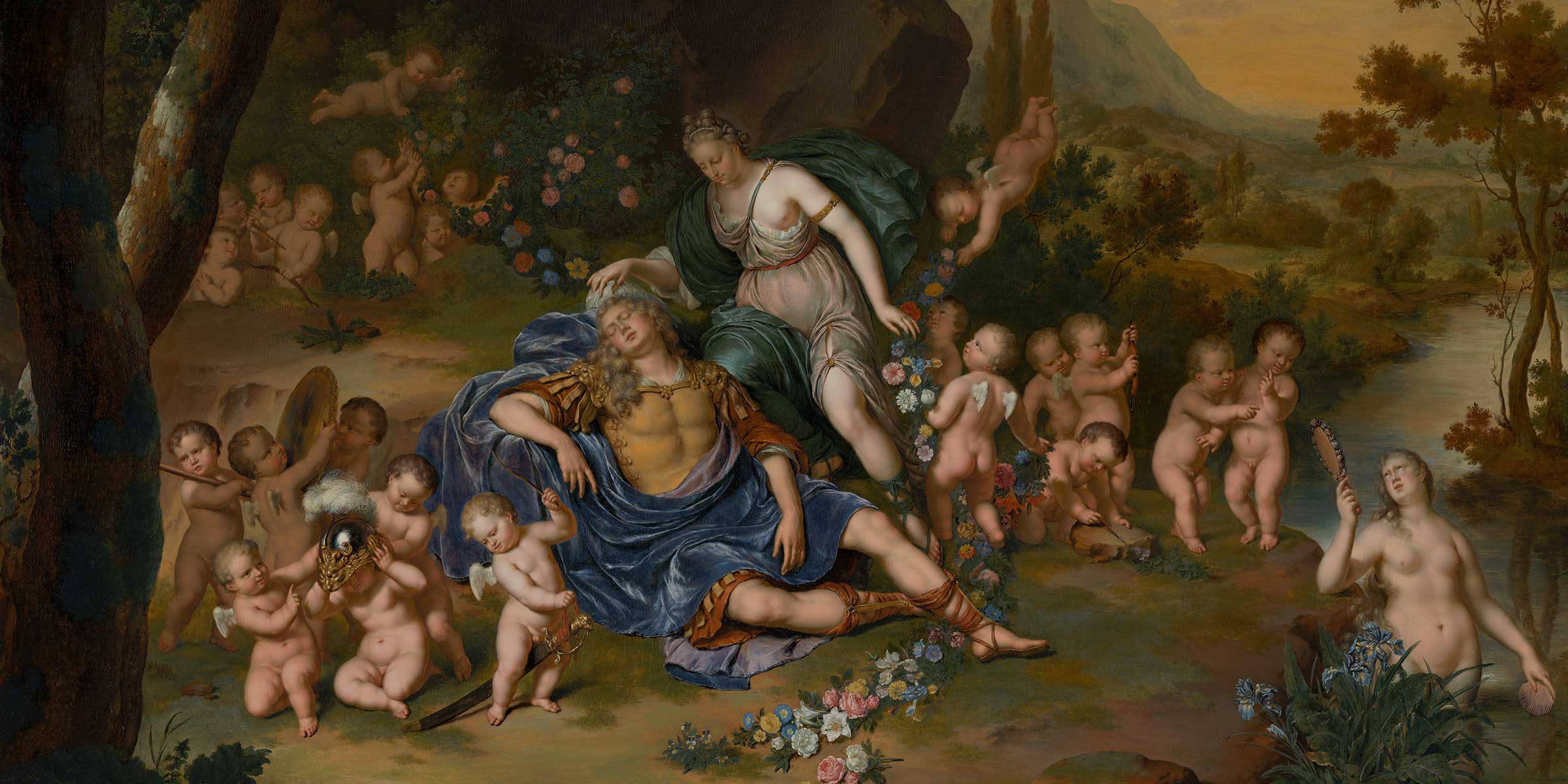
Armida Binding the Sleeping Rinaldo with Flowers (detail), by Willem van Mieris, 1709. Mauritshuis, The Hague.
Lay also includes a short statement indicating the sweeping nature of his critique, proclaiming the text “written for a general service” by one who “sincerely desires the present and eternal welfare and happiness of all mankind all the world over, of all colors, and nations.” The book shows how much this was a personal conviction. In a later section about his time at sea, Lay conveys the sense of stunned horror he felt as a young man upon hearing his shipmates’ stories of the slave trade. An account of his time in Barbados serves to reveal not just the nightmare of bondage but how and why the Lays were radicalized against it. Sarah fed their African visitors, inviting them in for meals; when they lacked anything else to give, even moldering food was eagerly accepted. The memory of people ravenously consuming “stinking biscuits” and “decayed fish” leads Lay to pinpoint the source of real rot: the island’s masters, “scum of the infernal pit, a little worse than the same that comes off their sugar when it is boiling, which is composed of grease, dirt, dung, and other filthiness, as it may be limbs, bowels, and excrements of the poor slaves and beasts.” For the Lays, there was no shame in consuming spoiled food out of desperation; forcing other humans into that state is what made a person worthy of contempt. Defying those who thought Africans inferior, Lay is adamant that owning slaves is the true sign of “barbarity.” He lavishes particular scorn on formerly indentured servants who conveniently forget their own suffering and go on to procure human chattel, a callousness he deemed “intolerable.”
Over and over Lay exposes money and greed—covetousness—as the root of the problem at hand. “Why should any be so very earnestly bent about getting money? Doth any history mention anyone that was ever made good by riches?” he asks. “And by persons too that makes great appearance of sanctity in religious performances,” when, he writes, it is in fact mammon, “the most mischievous devil in all the world,” that motivates them. A century before Karl Marx analyzed similar phenomena, Lay paints a picture of the nascent capitalist economy and the warping effect on the human psyche of the devouring, compulsive pursuit of profit:
These rich grown, ever poor, over wealthy, ever needy, ever grasping, never satisfied, brim-full yet always empty, ever laboring, yet always idle, ever diligent, yet always negligent, ever waking, yet eternally asleep, ever living, panting, and breathing, after more, more, more, a little more, I say ever living but eternally dead, and there let ’em lie and stink still, if they will not be awakened. But I had much rather they should.
These “great and high masters of misrule” must be challenged to rouse from their destructive slumber. Only by inviting their wrath, Lay says, might the earth “become a paradise again, to all people, as it is to some.”
All people, not some. With those words—and through a lifetime of committed action on behalf of the enslaved and exploited—Lay challenged the conception of freedom that reigned supreme in his time and continues to influence ours. Constitutional scholar Aziz Rana has argued that since the colonial era American freedom has always possessed two faces: freedom and equality for a privileged subset of the population predicated on the unfreedom and subjugation of unlucky others. Lay rejected this formulation, insisting that freedom necessitates equality and that liberty, which he likens to life itself, belongs equally to everyone and must be extended to all without delay—a groundbreaking position in the early eighteenth century. For him there could be no freedom without equality, only the illusion of it. He also saw being in thrall to money and mammon as another form of bondage, the snare of covetousness trapping and corrupting the entire community.
In his magisterial Freedom in the Making of Western Culture, the Jamaican scholar Orlando Patterson argues that conceptions of freedom have historically taken three forms: personal, sovereign, and civic. Personal freedom is the most basic: it is the ability to do as one pleases within the limits of other people’s ability to do the same. Sovereign freedom, in contrast, is the freedom to do whatever one pleases to an individual or group: it is the freedom of absolute power, enjoyed by the tyrant and the slaveholder. In the decades after Lay’s death, it would be the growing abolitionist movement that advanced civic freedom—the capacity to fully participate in public life—by institutionalizing the concept of equality before the law in the United States, an idea without precedent in antebellum jurisprudence. Lay’s passionate opposition to the self-serving and Janus-faced notion of freedom embraced by slaveholders and settlers helped formulate and elevate this third freedom.
Ah! Freedom is a noble thing!
—John Barbour, 1375In his book, Lay repeatedly mentions that some of the thoughts he shares first came to his mind while he was working in his garden, in one case while “pulling up some weeds.” The image of a small, stooped old man, bending down to reach the ground and provide himself basic subsistence, is a visceral reminder that the freedom Lay chose and fought for was not an easy one. Unlike the indolent and entitled Quaker elders he battled, Lay required not leisure but labor to ensure his liberty. Living a life in accordance with his principles meant performing the backbreaking work slaveholders forced on others. He tended to his vegetable beds and fruit trees, carried water, wove cloth, and traveled on foot. Unlike too many self-proclaimed ethical consumers today, Lay was not building a private, purist paradise—an island of clean living in a corrupt sea. Rather, his refusal to consume unethical products was coupled with his efforts to alter society at large and to remake the unjust division of labor and labor’s rewards perpetuated by the institution of slavery. His choices challenged those who encountered him by showing that it was indeed possible to live another way and to cause less harm.
Lay’s remarkable life upsets the pat insistence, so common among apologists for the past, that we should not judge historical figures according to modern conceptions of right and wrong, because our forebears were products of their time, unexposed to and thus ignorant of ethical precepts that seem obvious today. His relentless, attention-grabbing agitation ensured that his unusual ideas circulated widely; in Rediker’s words, his “confrontational methods made people talk.” The men of renown Lay targeted tried to silence him, often with force; at one point, a constabulary was conscripted to keep him out of Philadelphia meetings. Nevertheless, two founders, Benjamin Franklin and Benjamin Rush, admired him enough to publish his book and pen his biography, respectively. Franklin’s wife commissioned a portrait of Lay, knowing that her husband would value it. The painting depicts a small, thoughtful-looking man with a gray beard and thin legs standing in front of a cave, a basket of fruit and nuts at his feet and a copy of Tryon’s book in his hand. As Rediker notes, during the period when Lay fought for freedom for all, enslaved people were rising up across the Americas, their heroic but doomed rebellions invigorated by what Edward Trelawny, governor of Jamaica, called the “dangerous spirit of liberty.” Too many powerful people refused to acknowledge the wisdom and righteousness of their enslaved and abolitionist contemporaries, responding with derision and violence instead of empathy and reason. For that, they should be harshly judged.
But what about us—who, by virtue of being born later, take many of Lay’s ideas for granted? Even those of us who purport to believe in equality still live our lives complicit with structures of domination and exploitation that Lay would certainly find intolerable, and that we should find intolerable, too. Across our troubled and tumultuous world, growing contingents of white supremacists, nationalists, and reactionaries believe that their freedom must be predicated on the explicit subjugation of others, be they poor people, Black people, brown people, immigrants, women, queer people, trans people, and nonhuman animals. Even some who profess liberal values scoff at those they deem too “woke,” fearful that using people’s preferred pronouns, calling out ableism, or challenging carnivory will discomfit individuals who hold more moderate views. Nearly three centuries on, Lay’s inclusive universalism remains the most potent antidote to divide-and-conquer politics and counterproductive incrementalism. Fortunately, new forms of radical abolitionism are also gaining ground, including movements against racialized state violence that demand the defunding of the prison-industrial complex and reinvestment in education, jobs, physical and mental health care, and other essential social services. Today’s abolitionism, like Lay’s, recognizes freedom and equality as interconnected rights, not privileges, that must be enjoyed by all in order to be truly secured. Our age has more than its share of masters of misrule. What we need is an army of Benjamin Lays, fierce and compassionate, to knock them down a notch.
